Soviet Tank Company vs US Armored Cavalry Platoon, Germany, 1990s
This scenario envisaged that the political collapse of the USSR had been forestalled and rising tensions on the reunification of Germany had led to war. The Soviet were atempting a breakthrough while the Americans were intent on stopping them. The American force was small but of high quality and fielded a lot firepower, especially if the helicopters could be deployed effectivley.
The US Force (Morale - Professional, Training - Expert)
The Soviet Force (Morale - Regular, Training - Trained)
Here is a view of the table from the east (the Soviet entry edge) before any troops are deployed:
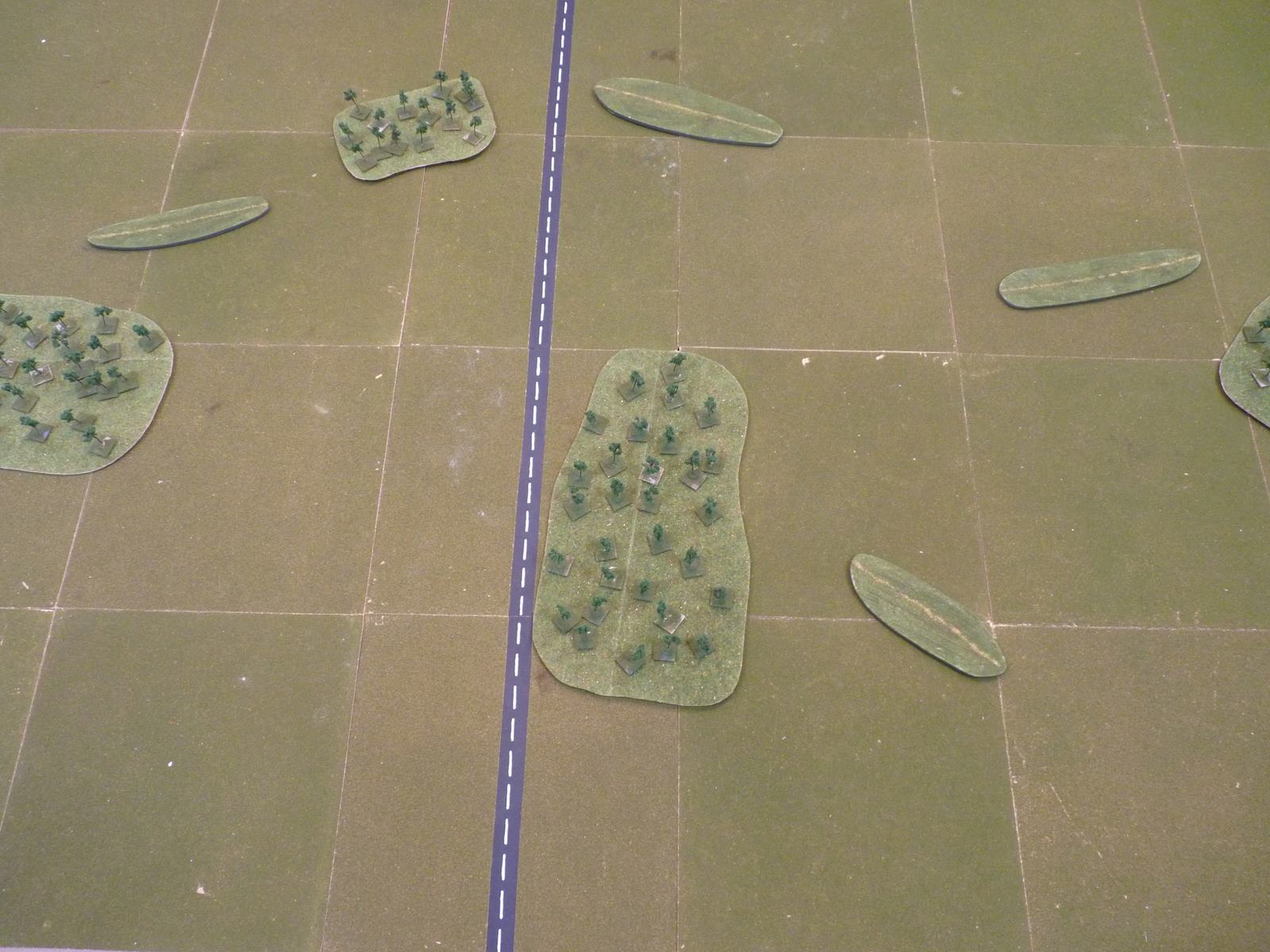
The woods were dense so prevented vehicle movement and the ridges were low.
The Soviets massed their forces to the south and used the central wood to protect their left from flanking fire.
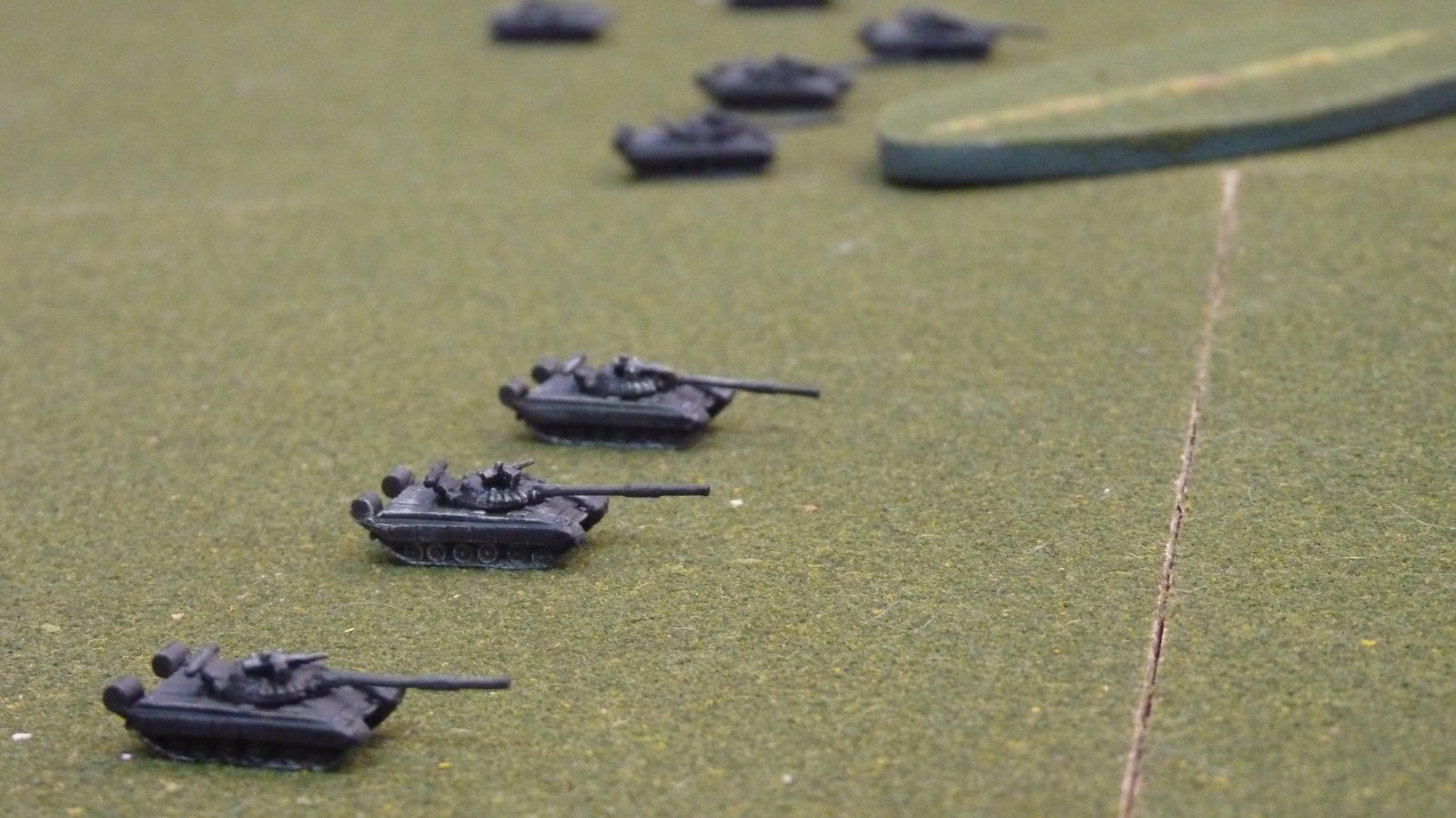
The Soviet programmed artillery bombardment hit the US postions, destroying all of the Bradleys and killing the CO.
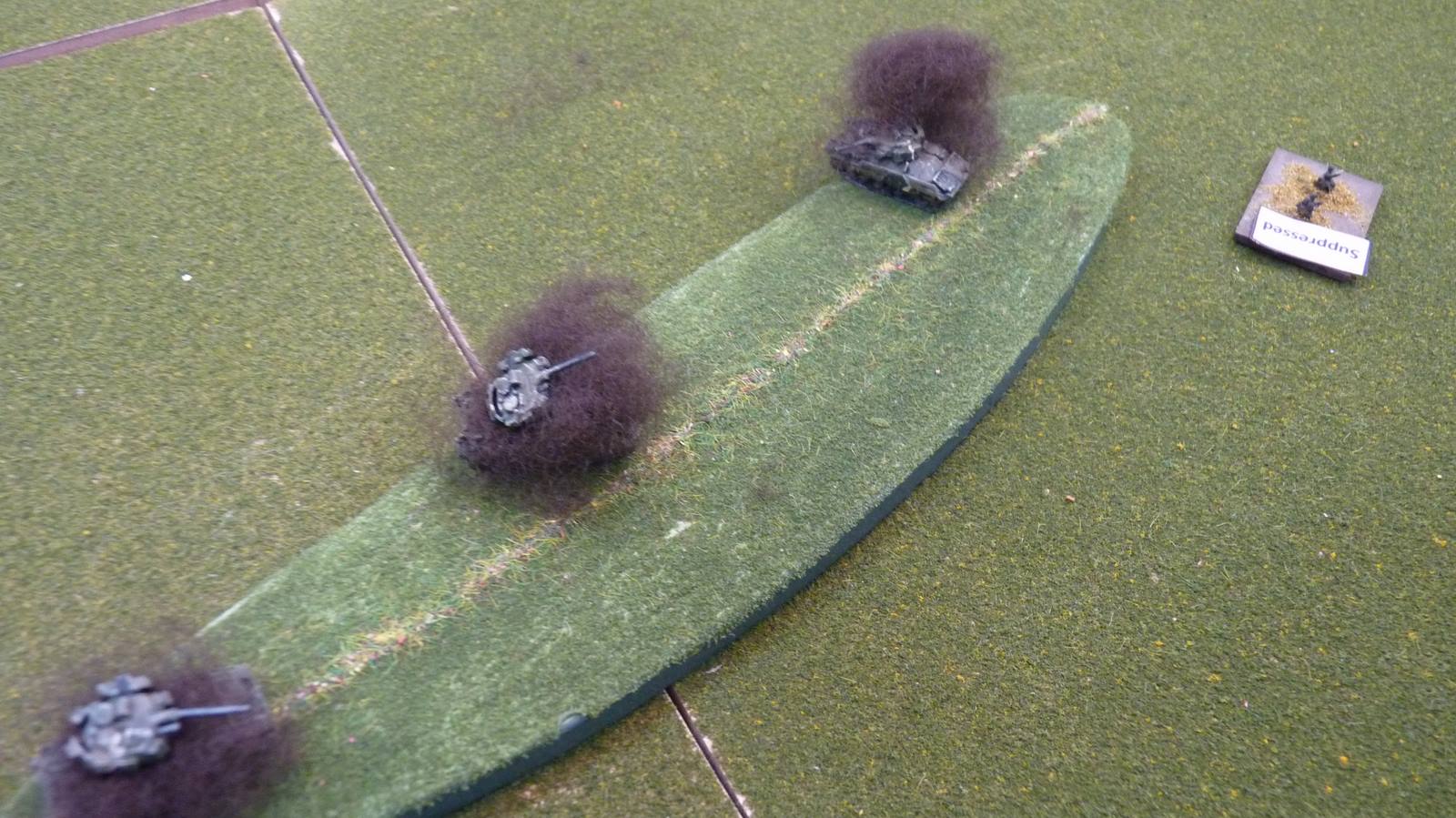
Crucially the Apaches deployed off-table so as to use their Hellfire to the best effect were not forced to pull back from the barrage so would be available from the start of the game..
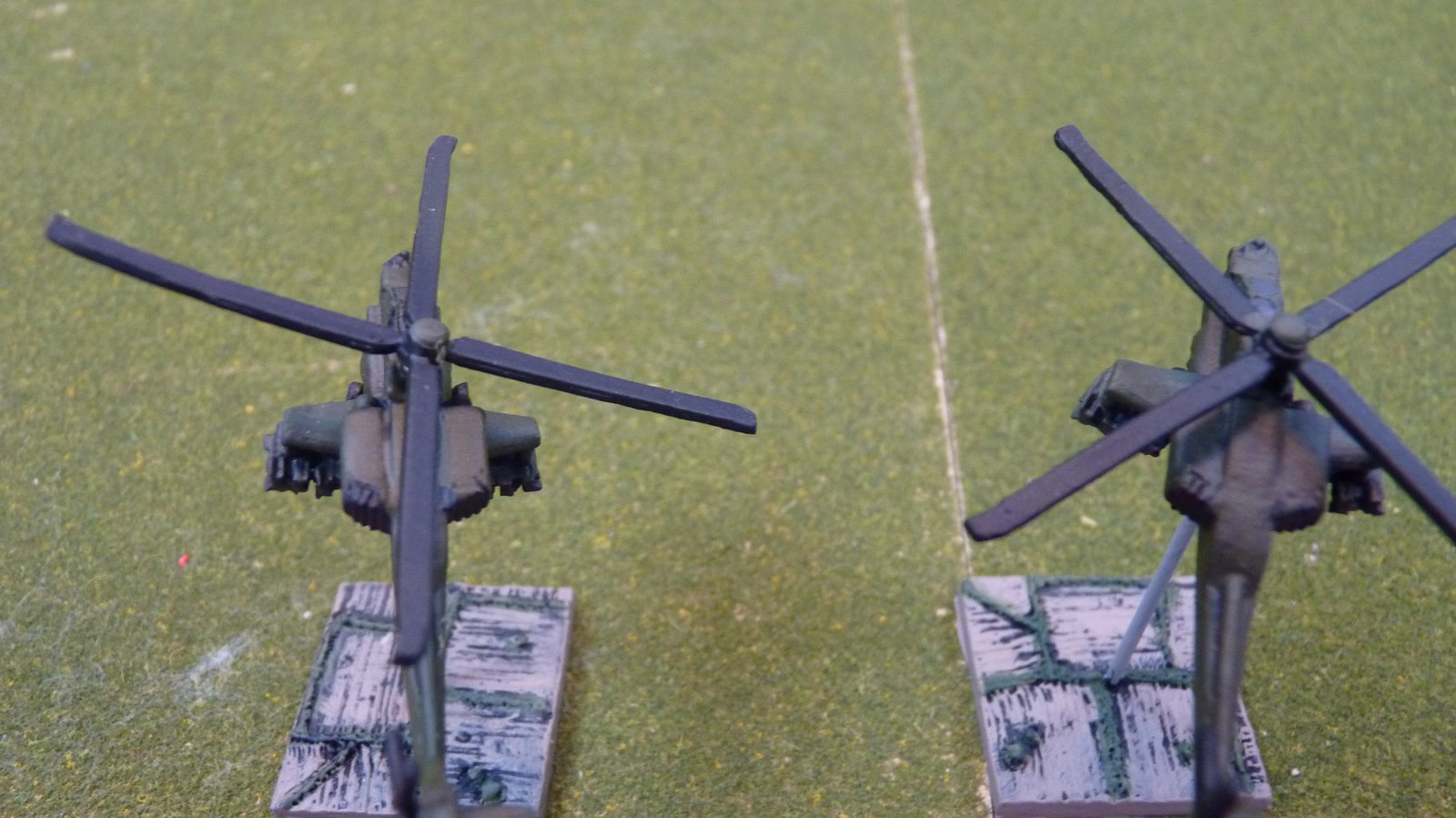
The Abrams had a good firing position behind a ridge line, moving from turret down to hull down to fire at the attackers. However a good shot put one of action.
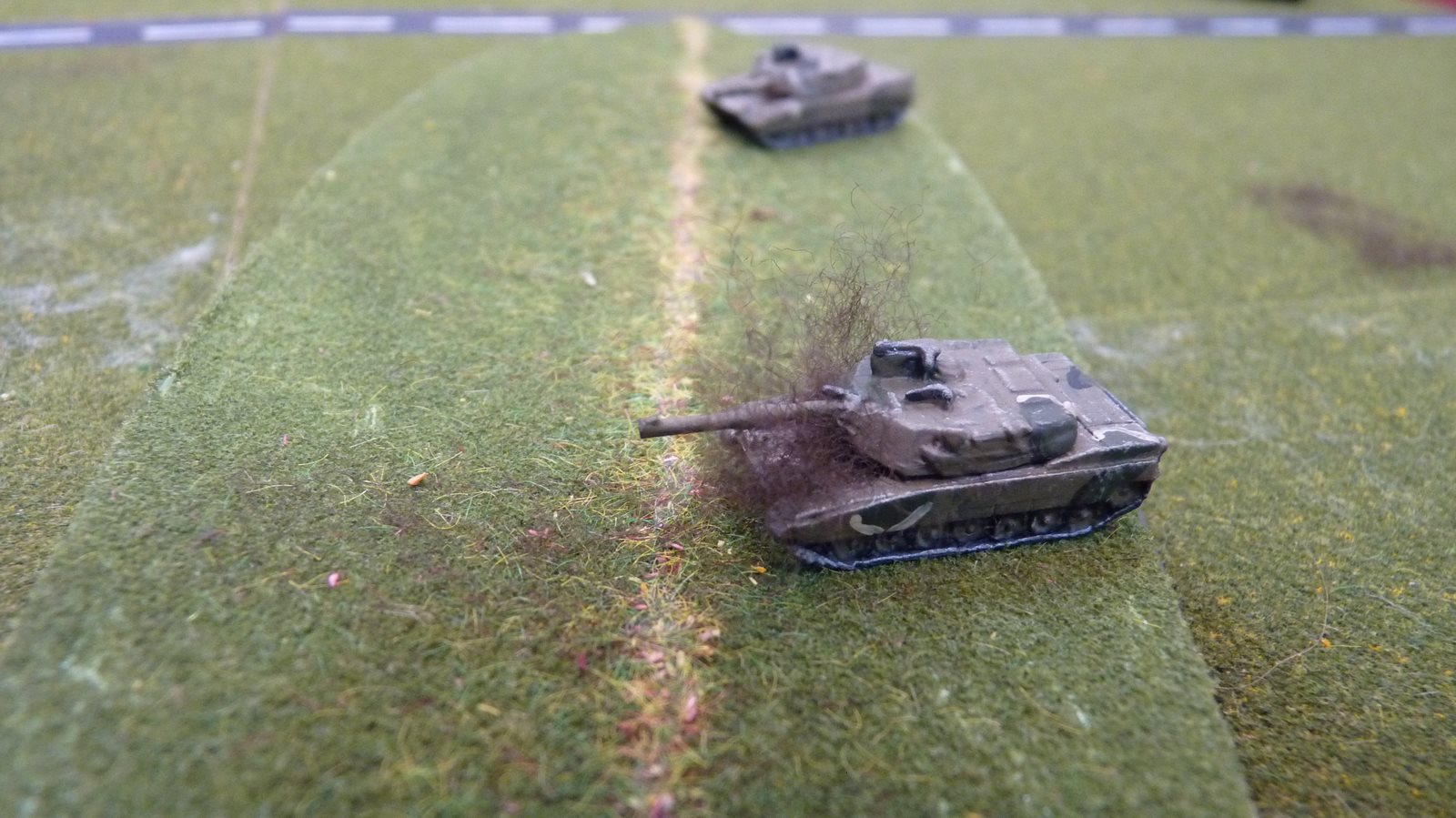
A platoon of T80s entered a hull down position behind another ridge from where they fired at the US tank. One was quickly hit and destroyed by a Hellfire.
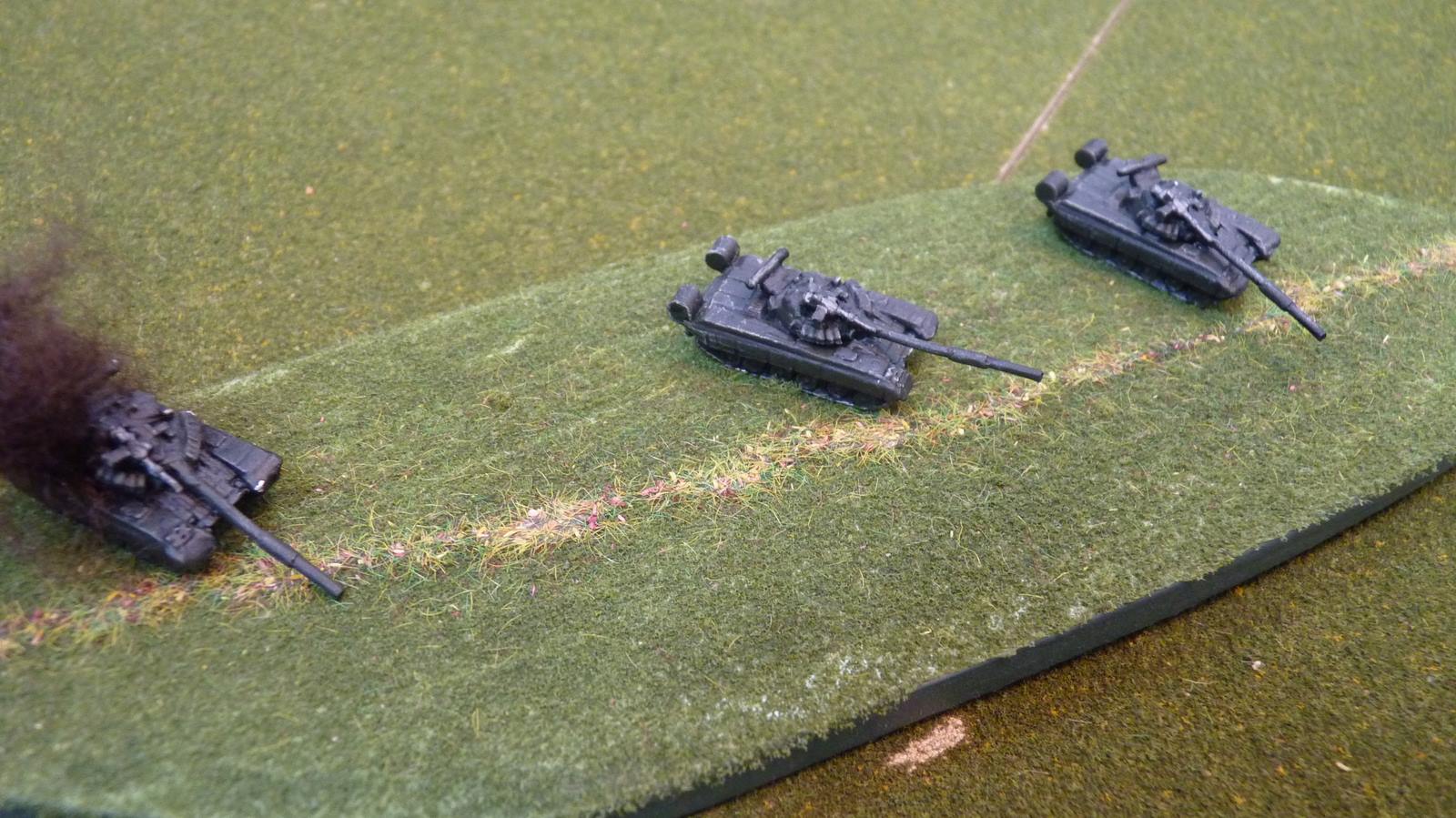
A Soviet platoon and the CHQ move to the south to outflank the US position although another Hellfire finds its target.
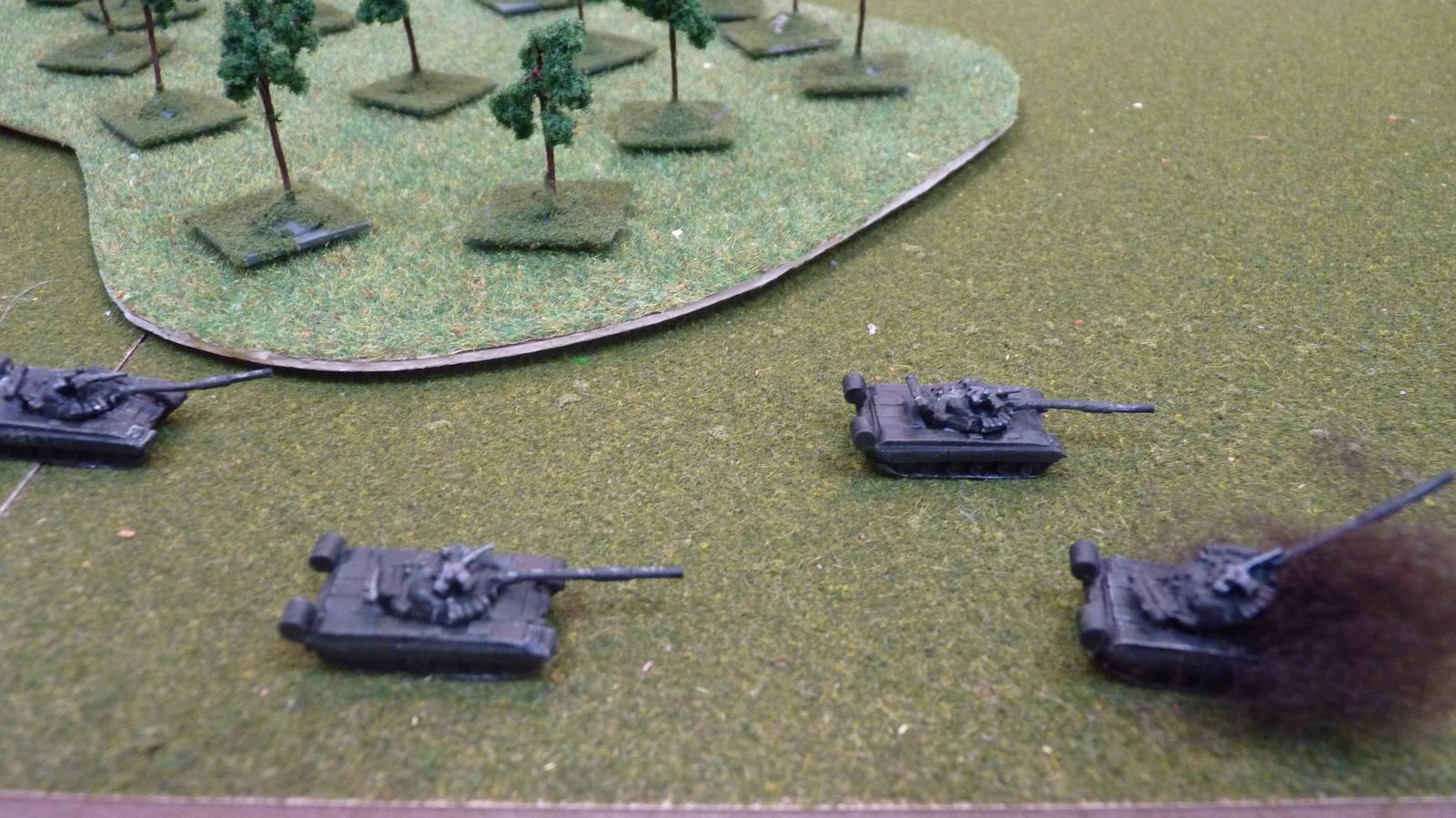
In danger of being overrun the surviving Abrams retreats to a new position, but continues to fire at the advancing Soviets.
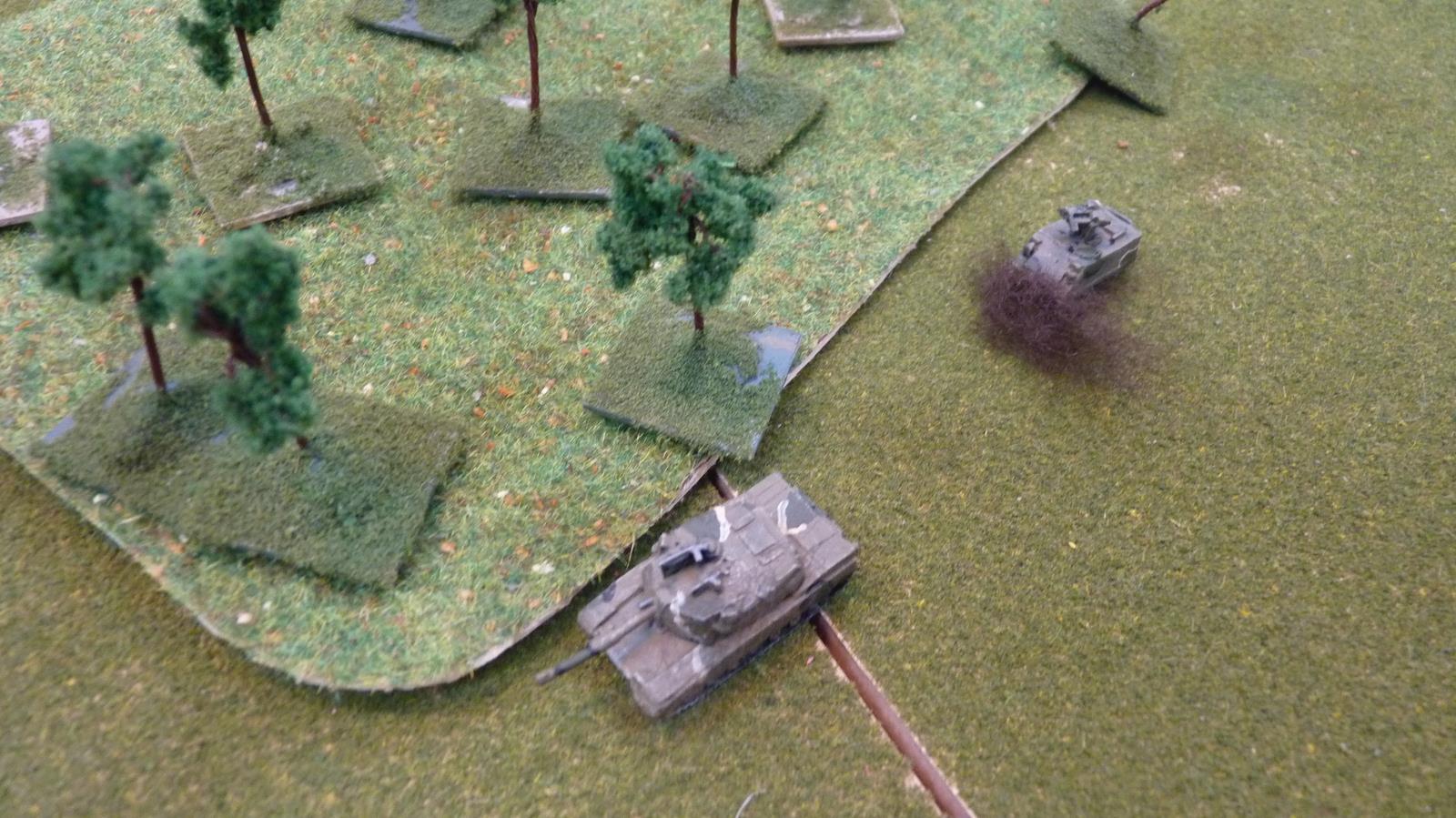
The last Abrams is Ko'd and the Apaches are warded off by the Soviet air defences leaving nothing to prevent a breakthrough.
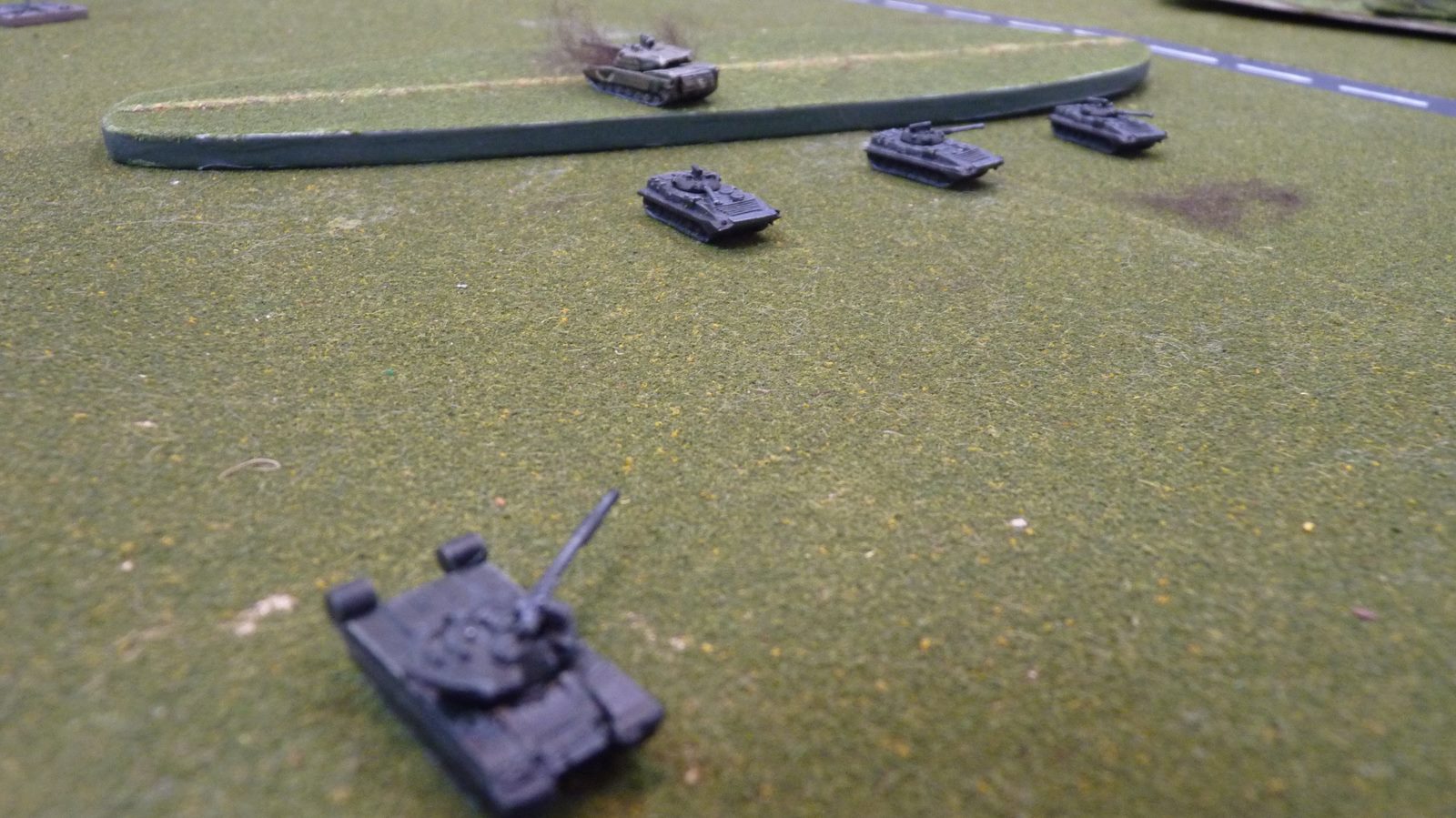
Verdict
A win to the Red Army! The programmed artillery proved devestating, helped by the Bradleys occupying an obvious position. The Hellfires proved deadly but failed to coordinate with the laser designator that survived the programmed barrage, an then were forced to lie low as the crucial breakthrough developed. The US AOO failed to spot a good target for his potentially deadly artillery which was down to poor positioning. There was some bad luck for the Americans but their deployment could have been better. A fast and furious piece of action that provided a good test.